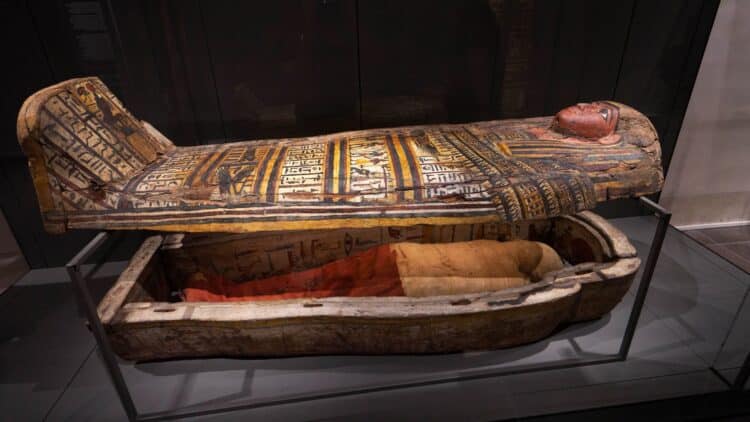It may be Rachel Weinz and Brendan Fraser’s fault, but whenever we think of mummies, we can’t help but imagine Egypt. This country is the best in the world when it comes to preserving its culture… or at least, those who have already passed away. When we think of mummies, we can’t help but think of those bodies embalmed with thousands of strips of hemp cloth, buried with great pomp and circumstance on the banks of the Nile. Despite their fame, ancient Egyptians weren’t the only ones to preserve their late relatives.
A group from the Australian National University believes that some pre-Neolithic peoples in southeastern China also preserved their dead. Not by embalming them as in Egypt, but by drying them with smoke. (I know what you’re thinking, but let’s spare ourselves the jokes about Texan BBQ.) Jokes aside, these bodies were found in positions very similar to those of Aztec cultures: crouched, squatting, in very tight postures. Laboratory analyses —i.e., X-rays and spectroscopy— show that they were preserved through mild heat treatment and exposure to smoke, which dried the tissues… without actually cremating them.
What did these archaeology students find? They found techniques for preserving human bodies that may predate ancient Egyptian embalming and indigenous Chilean mummies by more than 7,000 years.
What are Chinese mummies like?
Believe it or not, prehistoric mummies from Southeast Asia have a lot in common with those found in Latin America. They are bodies perfectly preserved in the fetal position, perhaps an allusion to how we return to the earth: we are born that way, and that is how they are buried… Like babies returning to nature.
But why do they love their dead, you may ask. The peoples of tropical Asia, who lived by hunting and gathering wild plants, lived in very humid conditions that led to the rapid deterioration of the body in extreme decomposition. According to archaeological data, many of these peoples solved the problem by smoking the bodies of their loved ones for weeks or months to dry them out without the joints becoming stiff, and then burying their dead in the fetal position.
Although it may seem astonishing, there are indigenous communities in New Guinea that still perform this type of funeral ceremony and mummification process.
Asian mummies versus Egyptian mummies
How do mummies from Southeast Asia, such as China, Vietnam, and Indonesia, differ? The mummies found in these places using smoking embalming techniques date back some 10,000 to 12,000 years. The oldest are estimated to be approximately 14,000 years old. Although they are awaiting carbon-14 testing, this would give them the Guinness World Record for the oldest mummies in perfect condition in the world.
On the other hand, the mummies of Egypt, which are the best known worldwide, date back only about 2,600 years… They are all young girls compared to those found in Southeast Asia! However, it should also be noted that naturally mummified bodies have also been found in the desert sands. These bodies are not considered to be mummies embalmed by human hands, but rather a natural result of environmental factors in the terrain, such as the lack of humidity fluctuations. Nevertheless, these bodies are believed to be approximately 4,000 years old.
Conclusion
Who would have thought that the oldest mummies on the planet would go from being Egyptian to Asian? Anthropologists have not yet been able to find evidence of how the smoking process worked… we just hope they didn’t use the same aromatic herbs that are used for food… The last thing you would want would be to end up hungry while performing the funeral rites for your poor grandmother 10,000 years ago.

